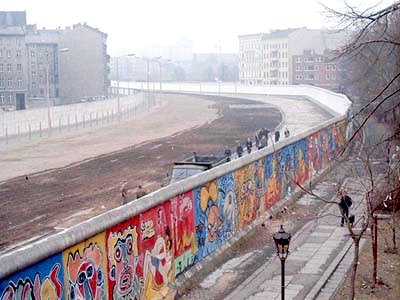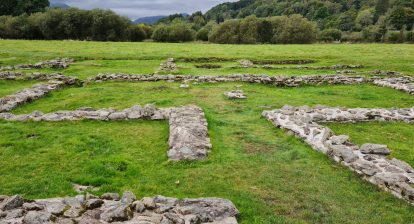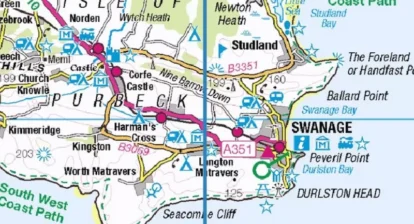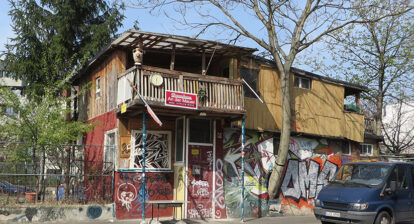The Berlin Wall Fell On November 9, 1989.
How did the Berlin Wall get erected?
At the end of WWII, the allied forces decided the fate of the defeated German nation by splitting it into four allied occupation zones, with the eastern part under the Soviet Union and the western under USA, UK and eventually France. Although Berlin was located entirely inside the Soviet territory, the Yalta and Potsdam agreements (which had been the cause of the country’s split), also split the city. The eastern part went to the Soviets and the western to the other Allies. All of this took place in June 1945.
The Soviets, however, never liked the idea of a capitalist West Berlin in the heart of Soviet East Germany. They tried everything to push the Allies out of Berlin and take over the whole city, including a blockade of West Berlin; even threatening nuclear war. However, the Allies stayed put.
The endless flow of people from east to west (nearly three billion since the end of the blockade in 1949) was a source of deep embarrassment for the Soviets, especially since most of defectors were professionals, fleeing repressive conditions and lack of opportunity; and whose departure caused a severe “brain drain” in East Germany. Meanwhile, life in the western half was better and more prosperous with opportunity for growth.

East German border guard Konrad Schumann leaping over barbed wire to defect to West Germany during construction of the Berlin Wall. CC BY
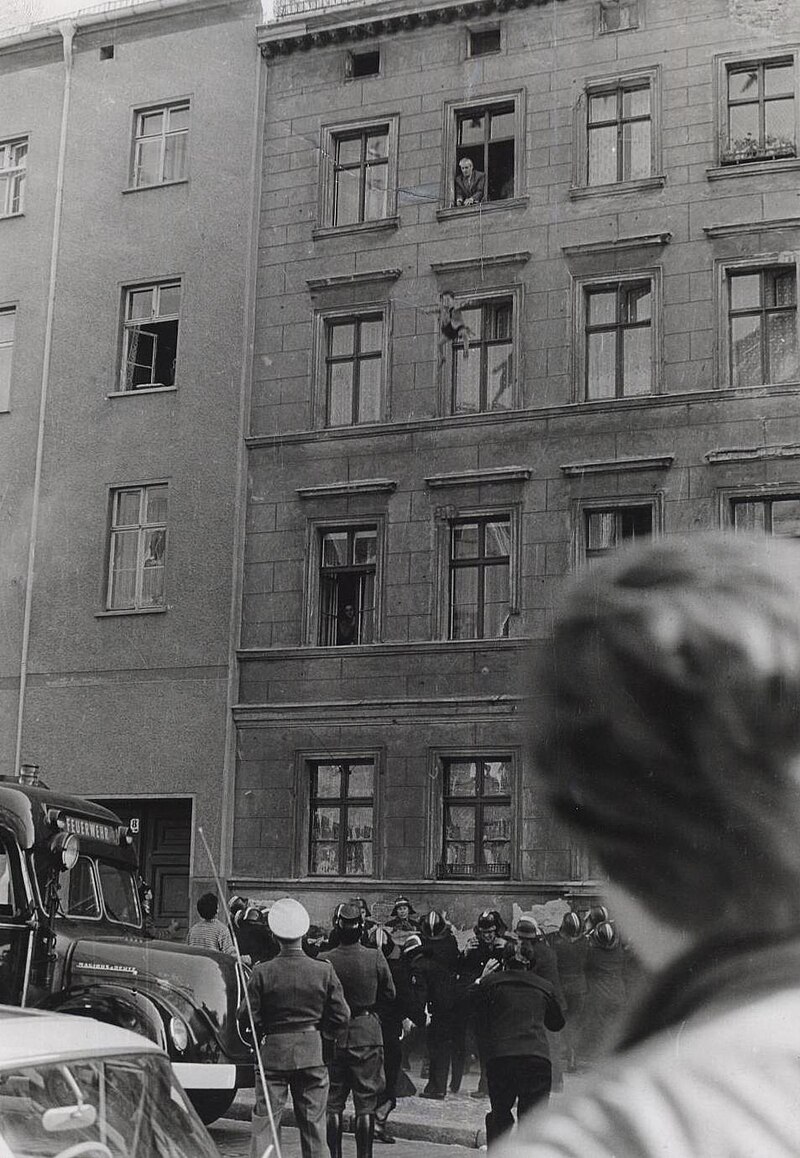
Oct. 7, 1961. Four-year-old Michael Finder of East Germany is tossed by his father into a net held by residents across the border in West Berlin. The father, Willy Finder, then prepares to make the jump himself. From the booklet “A City Torn Apart: Building of the Berlin Wall.” For more information, visit CIA’s Historical Collections webpage. CC BY
August 12, 1961 was the final straw, when around 2,400 people defected in a single day — the largest defection ever. That very night, Soviet Premier Nikita Krushchev gave the East German government permission to close the border. On August 13, 1961 the German Democratic Republic (East Germany) began construction of the wall and within two weeks, a barbed wire and concrete wall was erected, separating east and west Berlin. Check posts were established that severely inhibited the movement of people from one part to the other. The official line was that the erection of the wall was to stop western “fascists” from entering East Germany and undermining the communist state. They even called it the “Antifascistischer Schutzwall,” or “antifascist bulwark,”.

Exterior of East Berlin Neue Zeit newspaper building (from the rear), with Berlin Wall in foreground, 1984. Other information Photo by George Garrigues. CC BY
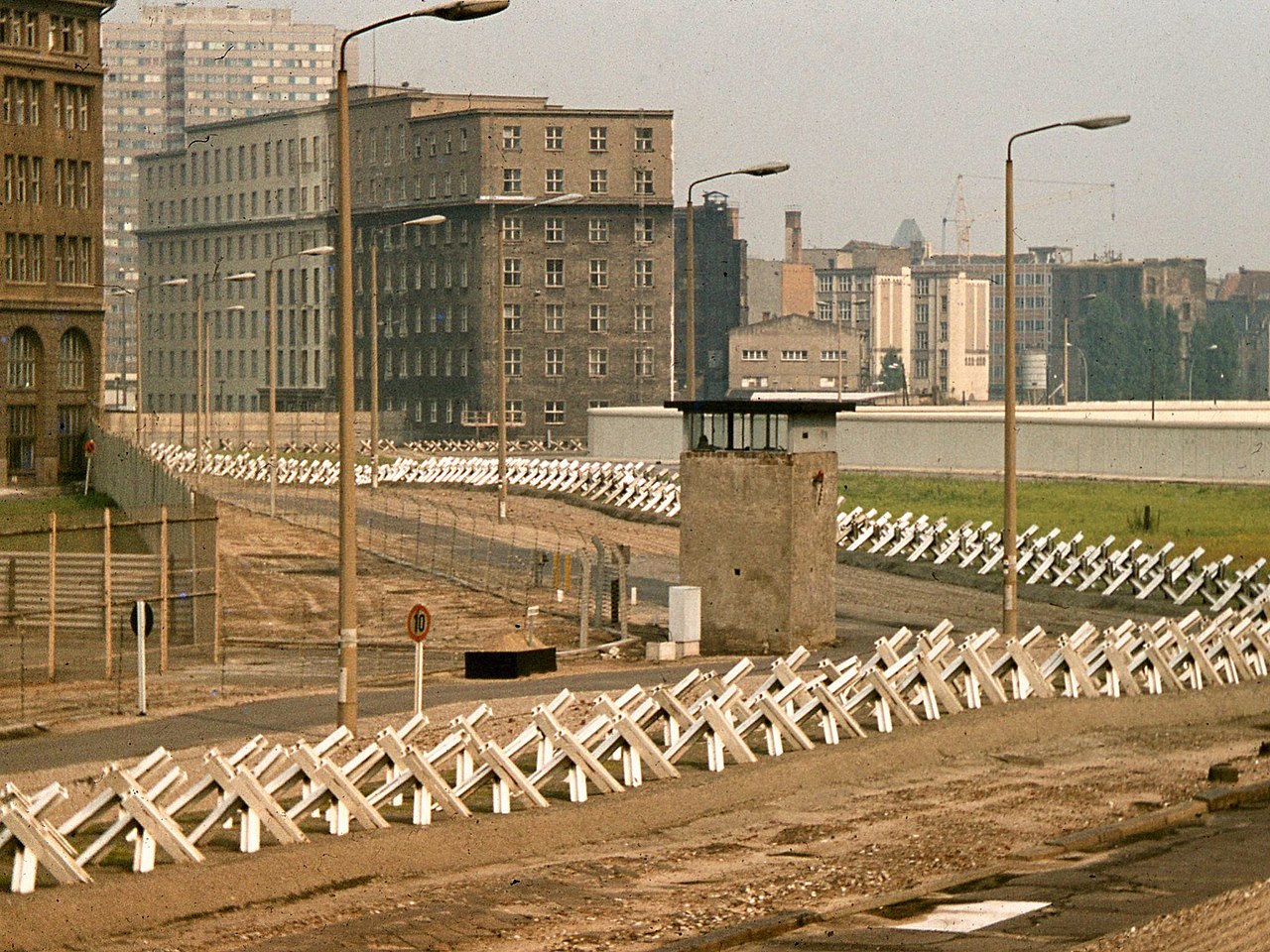
Berlin Wall death strip, 1977, showing Czech hedgehog and guard tower. Other information Photo by George Garrigues. CC BY
At least 171 people were killed trying to get over, under or around the wall and 5,000 refugees still managed to escape, between 1961 and 1989 — some of them using innovative ways to do so.
How did the Berlin Wall fall?
Eventually, the cold war started to fizzle out, with revolutions and unrest all across the Eastern Bloc.
And then, on November 9, 1989, the spokesman for the Communist Party of East Berlin was meant to announce a change in its relations with the west and a relaxation of the stringent border crossing laws.
Instead, Günter Schabowski, a communist party official in East Berlin, played a pivotal role in the fall of the Berlin Wall in 1989. During a press conference on November 9, 1989, Schabowski was tasked with announcing new regulations that would ease travel restrictions between East and West Berlin. However, due to a misunderstanding, he mistakenly announced that East Germans would be able to travel freely to West Berlin immediately. This misstatement led to a surge of East Germans crossing the Berlin Wall, ultimately leading to its collapse.
Schabowski’s announcement was a result of several factors. He had recently been promoted to the position of party spokesman and was unfamiliar with the details of the new travel regulations. Additionally, he was reportedly nervous and unprepared for the press conference. When asked about the new rules, he hastily read from a note that had been handed to him just minutes earlier. The note stated that new travel regulations would take effect the following day, but Schabowski misinterpreted it to mean that the regulations were effective immediately.
Schabowski’s announcement was a catalyst for the fall of the Berlin Wall. It ignited a wave of protests and demonstrations that ultimately led to the collapse of the East German government. Schabowski himself was forced to resign from his position as party spokesman, and he was later arrested and charged with treason. However, he was eventually released from prison and went on to become a journalist and author.
Schabowski’s mistake had a profound impact on the course of events in East Berlin. Thousands of East Germans gathered at the Berlin Wall, demanding to be allowed to cross. Border guards were initially hesitant to open the gates, but they were eventually overwhelmed by the sheer number of people. As the crowds grew larger, the situation became increasingly chaotic. Eventually, the guards were forced to open the checkpoints, allowing East Germans to cross freely into West Berlin for the first time in 28 years.
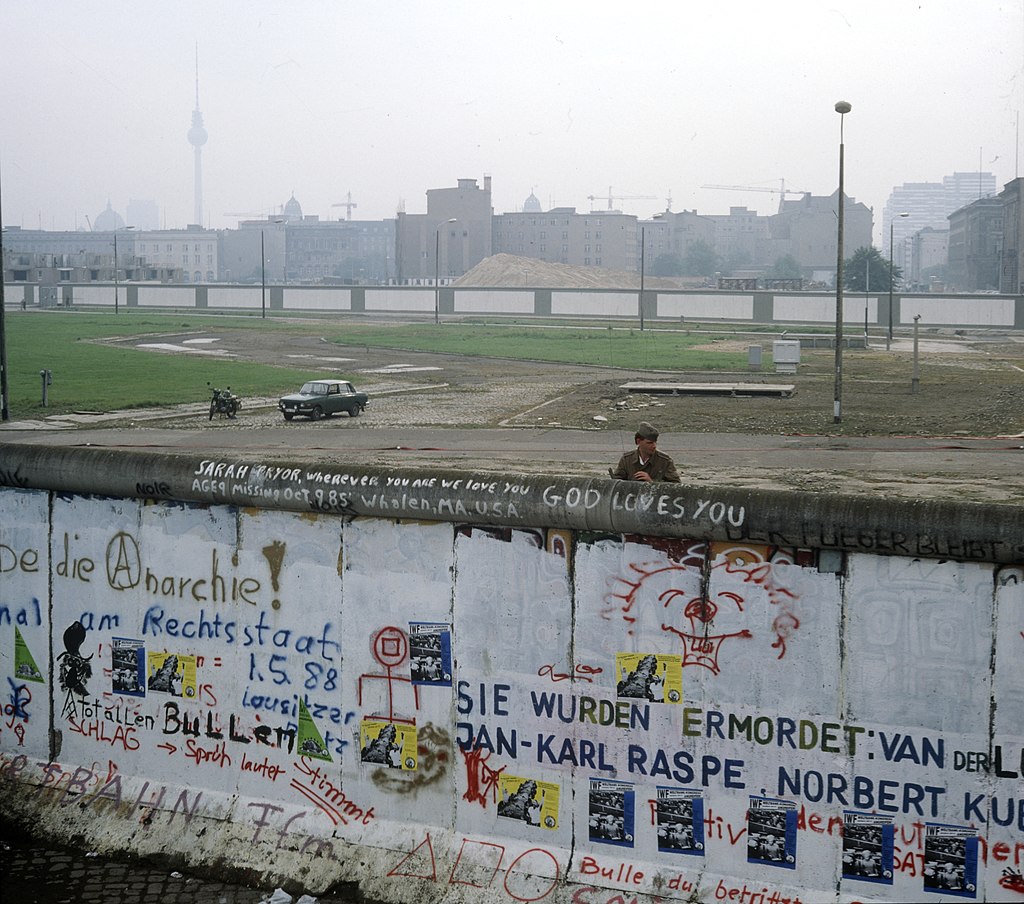
Berlin Wall, eastgerman border guard looks at the Kubat-Dreieck, July 1st 1988. CC BY
Starting from midnight the day of the announcement, citizens of East Berlin were free to cross over to the west. People from both sides congregated at the wall drinking beer and shouting “Open the gate” until finally they stormed through the check points.
And so on November 9, 1989, the Berlin Wall, a symbol of the cold war and the iron curtain, finally fell.
As one journalist put it, what ensued was “the greatest street party in the history of the world” with people crossing over from East Berlin and many using picks and hammers to break off pieces of the wall. Cranes and bulldozers finally pulled down the rest, uniting east and west Berlin for the first time since 1945. Its demolition was completed in November, 1991. One year after the fall of the Berlin Wall, the reunification of Germany was officially announced on October 3, 1990.
Meanwhile, the world continues to build new walls.
The construction:
